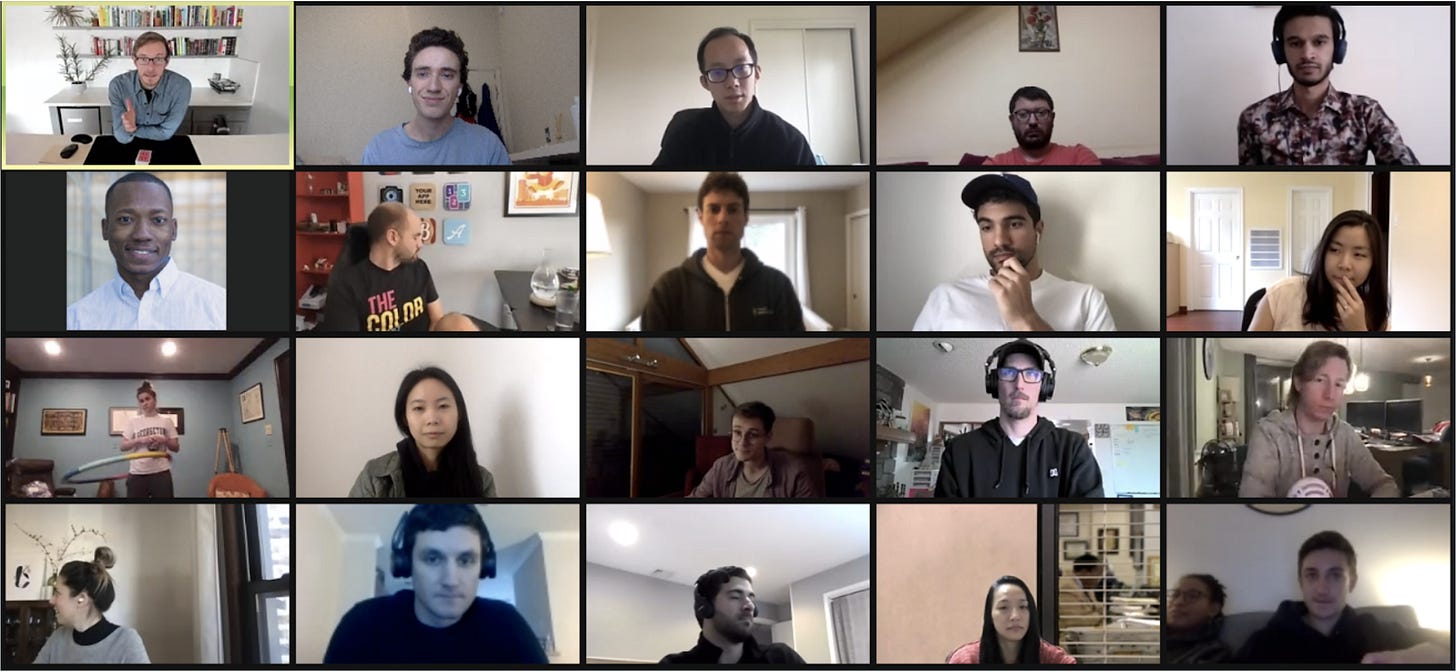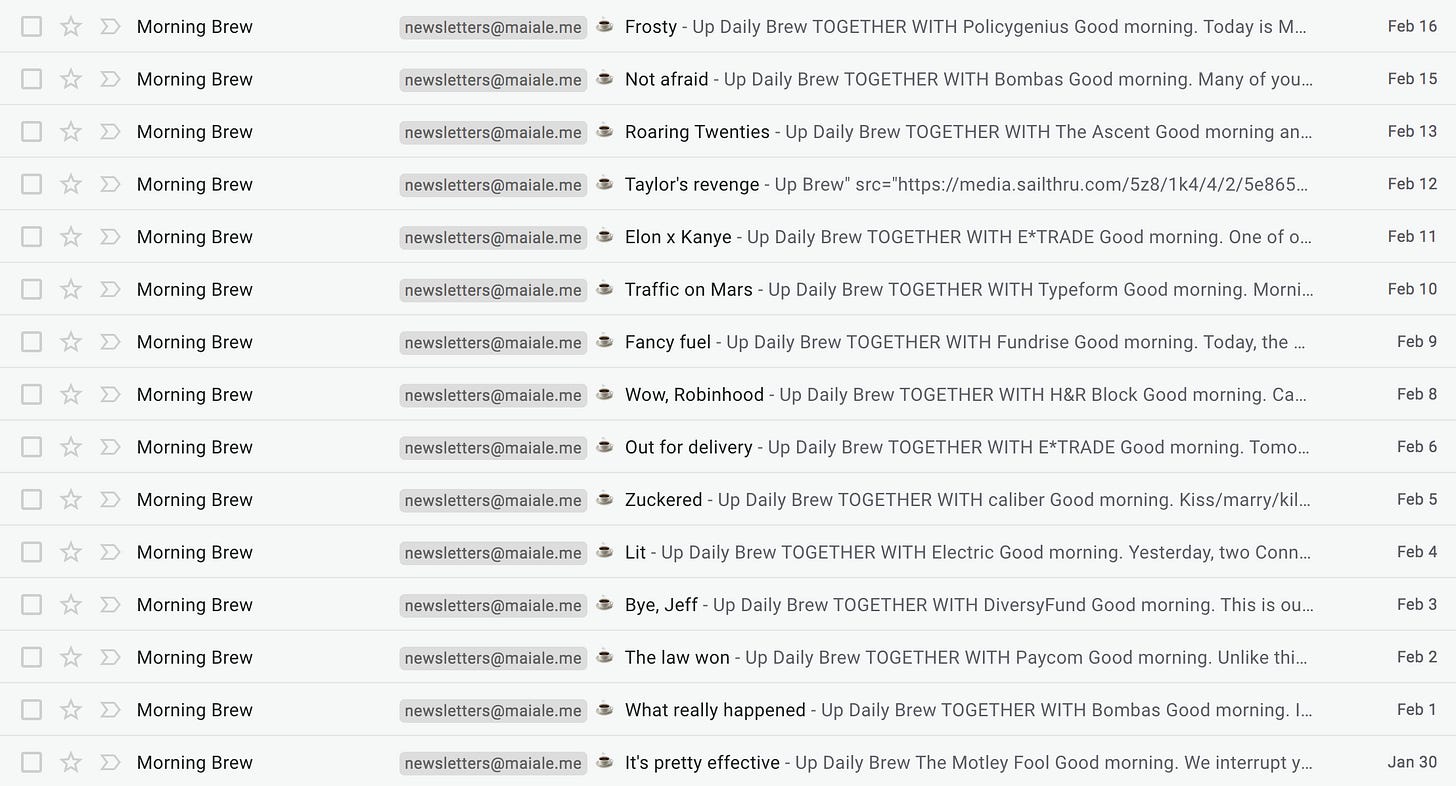Building a community
How to build an online digital community.
Community builders
Every startup nowadays claims to have a community. Few actually do.
Communities matter because they are one of the most effective ways to scale your ideas.
It’s how startups get their first 1,000 users, early feedback on their product, and create viral referral strategies.
What makes communities special is that they have a ton of energy, are highly engaged, and hyper-scale rapidly. It’s one of the most effective ways to build moats around your brand.
Roam Research built a community that’s allowed their MVP product to scale to thousands of users with no ad spend. They’re completely referral driven and have one of the strongest communities with #roamcult everywhere.
On Deck’s community has their members run all their events, and get thousands of free promotions with On Deck organic referrals.
Whoop created a community around biohacking that significantly increased retention by making their product the gate to connecting with other likeminded individuals.
Any startup can build a community too. It’s not about having a moonshot product or investments from tier 1 VCs. It’s about:
Targeting a niche
Providing consistent value
Scaling engagement
After growing 3 digital communities I’ve learned how to effectively scale communities to provide value to users.
Whether you’re building a newsletter, Twitter, or Slack community, I’ll share some thoughts on scaling your own online group.
Why build a community
Communities are nothing without set intentions.
Building one will inevitably take a lot of time and effort. Establishing your intentions early on will help mitigate the risk of wasting time.
For many Ecommerce or consumer products, communities are a great fit. However, if you’re an enterprise tool with a small market, then your effort is likely better spent in ads or organic content. Determine how much affinity is in the buyer’s equation to making a purchase.
I’ve seen too many SaaS companies focus efforts on building community for the sole purpose of fundraising. They care too much about venture capital signaling that they lose sight of their own product. That’s how you fail. Quickly.
Before we dive in, ask yourself:
Why do you want to build a community?
Is there a more efficient way to get to that goal?
Find your niche
The best community builders focus on depth over surface area. You want to be known as the best community for a specific vertical.
Some of my favorite niche online communities:
Matt Kobash Twitter → The marketing guy
Demand Curve Slack → The community of marketers
David Perrel → “The writing guy”
Robinhood Snacks → Investing 101
The problem is most communities try to do too much. If you’re not targeting a specific audience, you’ll never gain any foothold.
If you’re a podcast covering broad topics such as the news, then you’re competing against CNBC, Wall Street Journal, and every major news outlet investing millions of dollars into their research. Instead, go deep on what you’re an expert on and can provide a valuable perspective.
Whether it’s connecting startup founders, biohacking, or even a common interest in running, you want to be the obvious solution for your target audience. That’s how they’ll derive value and stick.
To figure out this niche, take a look at your own startup’s assets. What are your specific moats and why will people care to listen to your brand?
At Demand Curve, we’re uniquely positioned to run marketing communities because we help grow hundreds of startups. We’ve pattern-matched hundreds of marketing tactics people want to learn from us.
Other companies will leverage their aggregation of data, network, and previous experience.
Establish your niche early and run with it.
Go to your community
Don’t wait for your community to come to you.
The best way to acquire new users is to make joining your community frictionless.
For Demand Curve’s growth marketing community, we run entirely out of Slack. It’s where our target audience lives. They’re constantly checking notifications for their startups or side-hustles. There’s almost no friction.
Let’s run through some of my favorite channels for building communities.
Twitter
What makes Twitter great is that it’s a persistence channel: the more you post, the more engagement you’ll receive. Dedication to this channel results in (almost) guaranteed success.
However as you scale, it’ll become more and more difficult to engage with your community.
Remember: the goal of building a community is to be focused on one-to-one, not one-to-many. So keep your DMs open, reply to your followers, and constantly ask followers for feedback.
Slack
What makes Slack effective is that it’s meant for community building: threads, open DMs, and collaborative messages.
They even have incredible community building 3rd party plugin apps such as: donut.com, Giphy, Zoom, and Greetbot.
Slack is an amazing way to tear down walls and share your personality with those around you. Yet there’s the highest friction for joining.
It’s best to target groups that are already using Slack daily for work or organizations. If you can get people to build a habit around checking your Slack community specifically, then that’s how you get them hooked.
Newsletter
Why so many people turn to the newsletter is that they’re incredibly frictionless.
Regardless of demographic, everyone uses email and it has one of the easiest signup processes.
Every morning I get an email from Channing at Indie Hackers. It’s an easy, refreshing way for me to learn new growth tactics without leaving my normal workflow.
Want to start a community around personal investing? Hit people in their inbox. It’s where your target audience lives and thrives.
Find our where your target audience lives. Don't make them find you.
Set meaningful KPIs
If you’re tracking based on member growth rate, then you’re looking at the wrong metrics.
Your goal as a community builder is to scale engagement. The larger you get, the more difficult that becomes.
That’s why it’s important to set meaningful KPIs around engagement, not growth rate. Let community growth be a side effect of providing an incredible experience.
Let’s look at how you focus on engagement ratios across different platforms.
Twitter
Track your Twitter’s engagement not by the amount of followers gained, but by your engagement. You can calculate this by dividing your Impressions by Total engagement.
The Tweet above initially seems like it got great engagement for a small account; however
You’ll notice as you engage more with your audience and build stronger relationships, you’ll naturally see engagement ratios increase.
Accounts that grow too quickly are at risk of having poor engagement ratios that are hard to gain back.
Slack
If you’re using Slack, then check out the analytics dashboard: slack.com/admin/stats.
Instead of fixating on daily active members, focus on the ratio between the number of active members and the number of posts.
Newsletter
Benchmark your newsletter’s success based on your click-through rate, not your number of subscribers.
You’ll want to optimize for your open rate over time, but from email to email it’ll be too difficult to tell. Your click-through rate, on the other hand, will give you clear insights into how much value the user got from reading your content.
Build momentum
One of the keys to building momentum is simple: be consistent.
Demonstrate to your audience that they can rely on your community, and you’re going to consistently provide value to them.
Find your cadence not by what your competitors are doing, but by how you can sustainably provide a threshold of value.
There’s nothing stopping you from sending a daily newsletter like Morning Brew or Indie Hackers, but if it comes at the sacrifice of the quality, then it’s better to set a more realistic cadence.
Focus on producing the highest quality content and it’ll go much further than trying to reach output goals artificially set by your competitors.
Do things that don’t scale
One of the best principles of building a community is to default do things that won’t scale. Build a genuine connection with those in your network.
Send personal outreach for events, host small-group events, and get to know your audience. It’s pretty powerful when you can get people to lower their guard by demonstrating you’re more than a digital profile.
Whether you’re a newsletter, Slack community, or Twitter account, you can take your community off-platform: host office hours, icebreakers, or even magic shows.
It’s your role as a community manager to build as much affinity with your members as possible. Stay engaged with your community and listen to their wants.
Communities are powerful ways to build movements, sell products, or make lifelong friends. Make sure to leverage them wisely.







